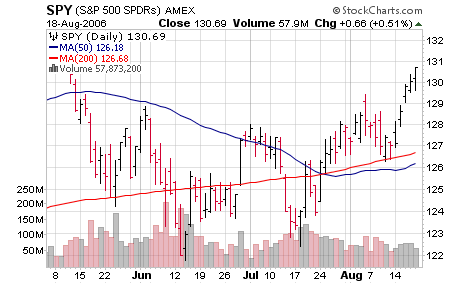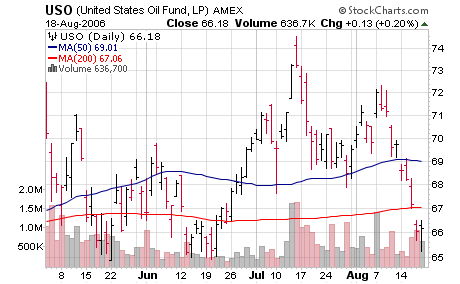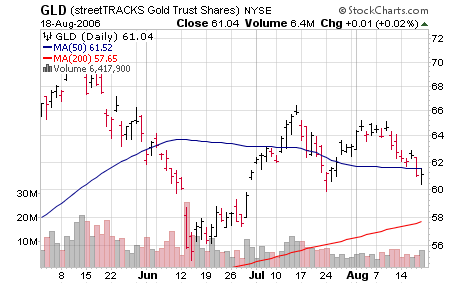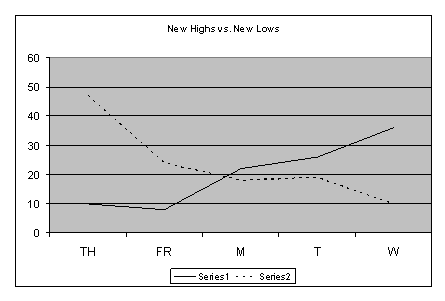Upward biased trading range
This week’s combined two inflation reports gave the market
something to celebrate about as inflation pressures did not grow as much as
feared, although rent inflation has yet to subside and may still cause
stickiness in inflation gauges in next months reports. Stocks AND bonds have
rallied nicely as a result of the lower than expected inflation numbers. However
this week’s reports also confirmed that a slowdown in growth is underway in the
US. Slower inflation and growth are certainly positive for bonds. And if indeed
the Fed has clearly stopped tightening for good, stocks may have reached a
bottom. But we suspect that the market will have difficulty embarking on a
sustainable and broad-based move higher as long as a slowdown is underway. There
are risks of a recession developing, especially considering the weakness in
housing indicators — and these may have knock on effects on consumption that
will grow. Stocks may well face a temporary period of concern about earnings as
growth slows more substantially than anticipated.
We still suspect a growth-scare lies ahead. While the S&P has broken above a
triangle with an upside target of around 1320 and more strength may lie ahead as
this objective is achieved, we are not convinced that the macro environment is
conducive to a sustainable new up-leg in stocks. And as long as the breadth of
our Top RS/EPS new highs breaking out and meeting our up fuel criteria do not
expand markedly, we will continue mostly on the sidelines.

UN 1701 has installed a temporary peace in Lebanon and if USO breaks down below
64.5 on good volume it will confirm an intermediate-term top in oil prices. A
GLD strong volume close under 59.5 would help confirm a peak in these two key
commodities and likely mean more downside in commodity indexes that are already
weak. Weak commodities would be another expected confirmation of the growth
slowdown we’ve been warning about for some time. Such moves would also imply
that markets are anticipating that the War in Lebanon is on ice over the
short-term.

However, beyond the short-term, investors need to be prepared for a potential
ultimate failure of UN 1701. It could come rather quickly, or it could fester
for months or even years, but the odds are that further conflict will develop
because UN 1701 doesn’t truly disarm Hezbollah, and Hezbollah is religiously
intent on wiping out Israel. Moreover the incentives for terrorism have
increased radically as a result of UN 1701 preventing Israel from wiping out
Hezbollah. Terrorism and fanaticism are likely on the rise, as is anti-US action
in the Middle East. The world may have pushed a temporary peace on Israel that
will only insure a larger more prolonged and possibly wider conflict down the
road. And a monkey-wrench of increased terrorism risk has been thrown into the
investment mix. Such an increase in potential risk is not likely to be positive
for equities long-term.

Investors should continue to skeptically let market action be the guide. Strong
rallies in the major averages accompanied by high volume to create a couple more
follow-through days would be the first sign of more upside ahead. The real
excitement may not come until the breadth of Top RS new highs starts to expand
broadly and stocks meeting our runaway up fuel criteria begin to break out with
some plurality. Until then, we still suggest keeping your powder mostly dry. The
markets are celebrating this week, but we suspect breaking above 1320-27 and
making new highs will become more difficult unless better volume and breadth
materializes. We continue to regard this as a TREACHEROUS ENVIRONMENT where
CAPITAL PRESERVATION SHOULD BE PARAMOUNT. Don’t allocate heavily to anything
that doesn’t scream at you.
Sometimes the sidelines are the best place to be. We suspect we’re still in one
of those times. Conflicting forces continue to grow, and high odds sustainable
moves don’t appear likely to materialize just yet. Until they do, we suggest
mostly keeping your powder dry and watching events transpire closely.

Our model portfolio followed in TradingMarkets.com with specific entry/exit/ops
levels from 1999 through May of 2003 was up 41% in 1999, 82% in 2000, 16.5% in
2001, 7.58% in 2002, and we stopped specific recommendations up around 5% in May
2003 (strict following of our US only methodologies should have had portfolios
up 17% for the year 2003) — all on worst drawdown of under 7%. This did not
include our foreign stock recommendations that had spectacular performance in
2003.
Our US selection methods, our Top RS/EPS New Highs list published on
TradingMarkets.com, had readings of 10, 8, 22, 26 and 36 with 18 breakouts of 4+
week ranges, no valid trades meeting criteria, and no close calls. This week,
our bottom RS/EPS New Lows recorded readings of 47, 24, 18, 19 and 10 with 7
breakdowns of 4+ week ranges, no valid trades and no close calls. The “modelâ€
portfolio of trades meeting criteria has some time back exited all positions and
is 100% in cash.
Mark Boucher has been ranked #1 by Nelson’s World’s Best Money Managers for
his 5-year compounded annual rate of return of 26.6%.
For those not familiar with our long/short strategies, we suggest you review my
book “The Hedge Fund Edge“, my course “The
Science of Trading“, my video seminar, where I discuss many new techniques,
and my latest educational product, the
interactive training module. Basically, we have rigorous criteria for
potential long stocks that we call “up-fuel”, as well as rigorous criteria for
potential short stocks that we call “down-fuel”.
